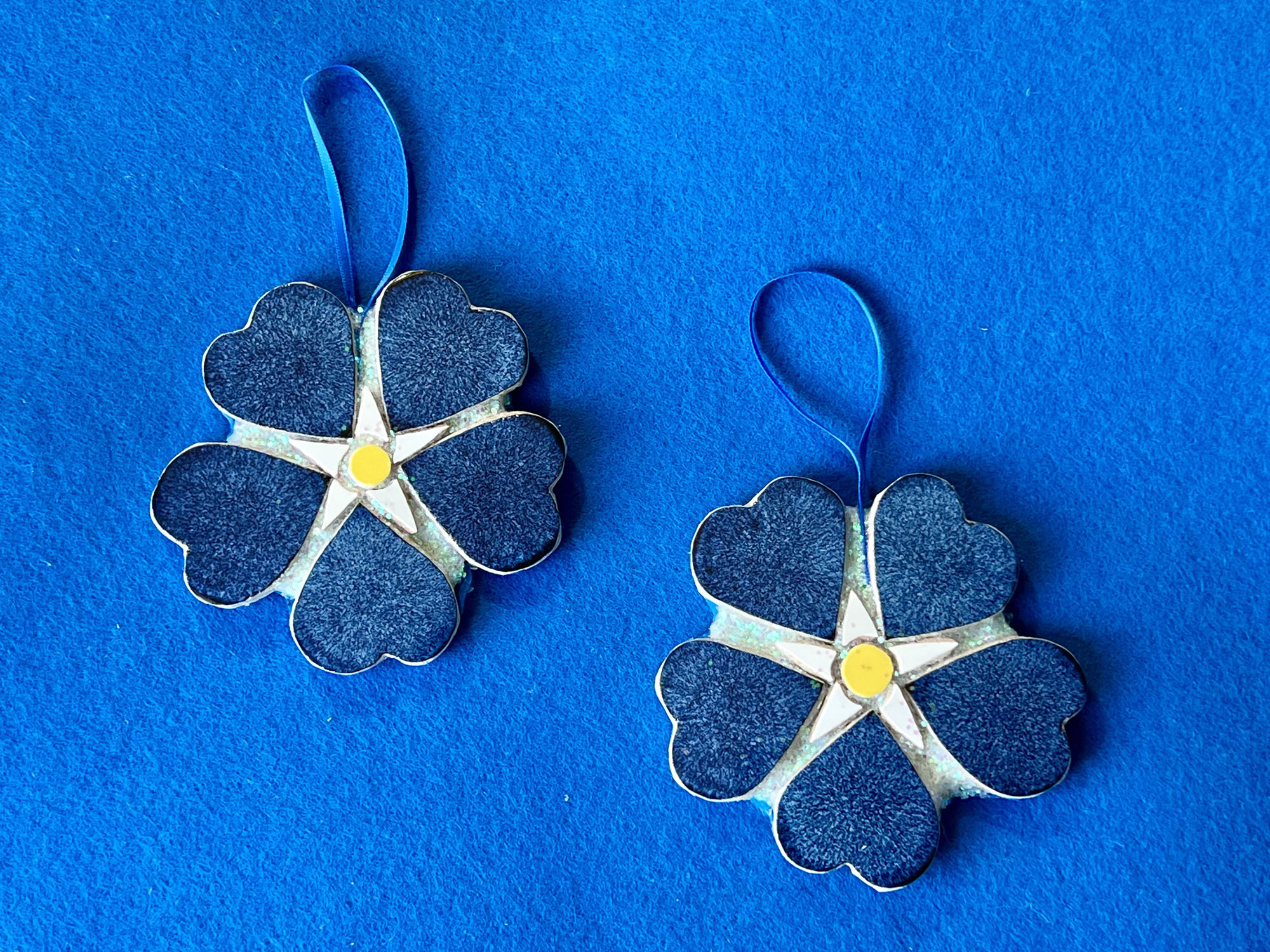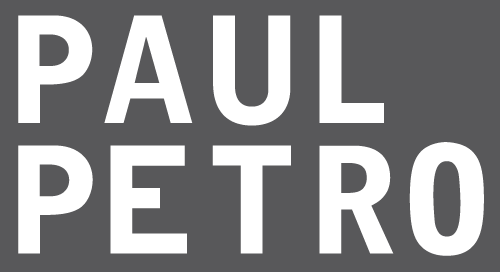Za zay gaa mitig
Michel Dumont
(Decorated Tree)
November 15 - December 21, 2024

To view images of the exhibition, please click here.
Paul Petro Contemporary Art is pleased to present the exhibition Za zay gaa mitig by Thunder Bay-based Métis artist Michel Dumont.
Dumont is "doing" our 28th annual Christmas Spice tree and this new work will form the centrepiece of his exhibition. Dumont's exhibition title Za zay gaa mitig is Ojibway for "decorated tree". Dumont's exhibition will morph into a grouping of allies and familiars come the opening of Christmas Spice on November 29. Pictured here are his forget-me-not mosaic ornaments. The motif is inspired by Métis and Ojibway florals that make up the flora of the Robinson Treaty area.
To see all the Forget-Me-Nots, visit our multiples and small works website here.
Michel Dumont self-identifies as a queer, Métis, Two-Spirit, disabled artist and trauma survivor based in Thunder Bay, Ontario. He studied Visual Arts and Psychology at Lakehead University (1986 -1992). In his words, Dumont “specializes in breathing new life into discarded vintage tile in striking mosaic pieces. I also create wearable art using packing tape, cellophane and LED lights, as well as exploration in installation art. As a survivor of intergenerational trauma stemming from Indian Day School, my work often explores emerging themes in anti-colonial urban indigenous and queer identities.”
Dumont has exhibited widely in group and solo exhibitions in Ontario, Quebec and Manitoba. In 2018 he was recognized as Visual Artist of the year by Thunder Bay Arts & Heritage. He has received two residencies at the Banff Centre for the Arts & Creativity (2018, 2021), an artist fellowship at the Leslie-Lohman Museum, NYC (2022), and was chosen as the 2022 Indigenous Artist in the Park, a residency at Allen Gardens, Toronto (2022).
Jingle Dress Deer
Oijbway:
Zaangwewe-magoonday (jingle dress)
Waawaashkeshi (deer)
“I made this dancing doe to honour the Ojibway women in my family. The jingle dress appeared in the 1920s in Northern Minnesota and in the Canadian Rainy River area almost simultaneously. I would love to believe it was two sisters making their dresses at the same time. The Indian day school tried to erase the Indian in my mother and aunties, so I chose to make the dress that they weren’t able to wear.” — Michel Dumont
Hunter Normativity
“In this early work I experimented with hand cut leather, a medium I originally contemplated for my animal sculptures. After I realized that I excelled in tile work, Hunter Normativity became an interesting exploration of media. This deer is a play on words and action. Heteronormativity is something I have rebelled against, and yet in my exploration of the art of taxidermy I’ve worked to decolonize it and observe it from a queer lens. There is a current debate on whether Métis were hiding in plain sight, and this piece speaks to the notion of the hunted taking on the garb of the hunter and blending in.” — Michel Dumont
Gitigan mukwa (Ojibway for Garden bear)
“Gitigan mukwa / Garden Bear’s angry face is one of a silent scream as he is without a tongue. This represents both my chronic pain, and Indigenous voices that frequently get overlooked or erased. His markings are inspired by traditional Indigenous beadwork and satin applique. He is covered with a nourishing blanket of flowers, berries and love. Each flower and berry was hand carved with references to the flora of North western Ontario’s Black Bay where I grew up. They also represent the 25 years I’ve lived with chronic pain and anger, which is mitigated by therapy and meditation. Art is medicine, an Indigenous concept that flows through this piece.” — Michel Dumont
River of Pride from Queering the Sky
Curators Kelly McCray and Raheel Patel launched the Queering the Sky project during Pride 2023, inviting 10 queer artists to design the surfaces of umbrellas. Michel Dumont's umbrella includes his River of Pride motif, originally created during his residency as Indigenous Artist in the Park at Allan Gardens during the summer of 2022. The River of Pride is a mosaic piece reflective of his experience in Allan Gardens during the annual Toronto Pride Parades and draws inspiration from Indigenous ribbon skirts and shirts.
Maple Leaf Weasel
Maple Leaf Weasel is an indictment against the Canadian government and their treatment and underfunding of on-reserve indigenous children and families in the foster system, which is really the new residential school system. #everychildmatters
Porphyry Island Deer
“There is a history of light keepers marrying Ojibway women on Porphyry Island, from the second light keepers family in the 1890s to the last family to man the light in the 1980s – my aunt and uncle. This deer was my attempt to honour this legacy of interdependence and love. I pictured my aunt and her beautiful thick black hair, which she always kept in a flowing pony, holding the medicine wheel, my uncle, is holding a lantern. In the hundred-year span, the roles of Indigenous women on this island changed, beginning as homemakers and eventually shifting meaning. Originally they lived on the island year round, gave birth and buried their children, which is why the cemetery exists on the island. My aunt was renowned for her bread baking, visitors to the island still to this day remark on her pastries. What changed in a hundred years was that she was considered an assistant lighthouse keeper to her husband, in addition to a homemaker. The carved elements on the Porphyry Island Deer reference aspects of this history. On the right side snout, my uncle is pictured holding the lantern as Keeper of light and safety. On the forehead, the 1960s Light Tower. On the left side snout, my aunt is pictured holding the medicine wheel. Inside both ears is a succulent called encrusted saxifrage. The body holds the outline of the island and its unique black volcanic sand. On the lower front left of the deer’s body, the modelled tiles represent Porphyry Reef. Under the devil's club botanical motif on either side there is a historic tug boat and sail boat. Devil's club is only found on a few islands in Lake Superior and British Columbia. The cross signifies the cemetery on the Island.” — Michel Dumont
